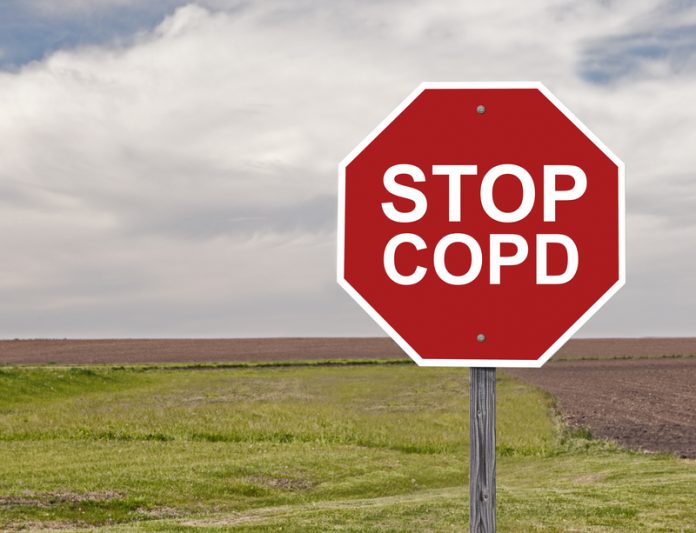Wendy Preston and Katy Beckford of ARNS tell us about the problem of dyspnoea and how it impacts on morbidity, mortality and healthcare utilisation
Dyspnoea is a common and often progressively debilitating symptom in an advanced chronic disease that is associated with fear, anxiety, activity limitations, and profound suffering.
Episodes of breathlessness can occur as symptoms of a worsening chronic problem, such as respiratory or cardiac disease but can also present as a new problem, which can be easily missed. It can be a strong prognostic indicator for hospitalisation and for premature death.
Many people delay seeking medical attention for episodic breathlessness and see it as a sign of ageing or because of the side effects of their aspects of daily living, for example, smoking, lack of exercise or being overweight or obese.
In the UK, 10% of the adult population have chronic breathlessness but less than half have this problem recorded. It is important to use tools, such as MRC breathlessness score and make this part of the patient’s annual health check so that it is detected earlier. It is sensitive for non-COPD causes too.
Causes
Hyperventilation and other breathing pattern abnormalities can co-exist with other causes of breathlessness, as well as be a problem in their own right. If a person is not responding to treatment, reconsidering causes is beneficial and a multidisciplinary approach that might include physiotherapy, occupational therapist and/or psychologist. The non-pharmaceutical elements of a treatment plan are often more important than medication prescribed.
Using a breathlessness assessment algorithm (1) helps the clinician accurately diagnose and can increase confidence in dealing with any issues that are being identified. Not all episodes of breathlessness are due to respiratory conditions and can also be linked to cardiac disease, obesity or diabetes.
Treatments
Non-pharmacological interventions can be beneficial and Booth (2013)2 recommends firstly those that affect breathing, for example, fan therapy, breathing exercise, and neuromuscular electrical stimulation. Secondly, those that affect thinking, that is targeting central perception of breathlessness, for example, education, relaxation techniques, cognitive behavioural therapy and active listening. And thirdly, interventions that affect functioning, for example, exercise programmes, mobility aids and pacing skills. It would seem that given the complexity of dyspnoea incorporation of one or several of these approaches to management is essential.
There are various pharmaceutical options that can be beneficial however where prescribed they are often used in conjunction with non-pharmaceutical strategies. Opioids, primarily morphine, work by lowering perception of dyspnoea and may decrease respiratory drive and a decrease in anxiety. Yet despite reassurance from limited evidence regarding the safety of using opioids, fear of overdosing and development of respiratory depression persists and limits current prescribing practices. Reassurance of both healthcare professionals and patients is often necessary.
Anxiolytics (such as benzodiazepines) however are prescribed more frequently and are not recommended, confusion in practice on whether to prescribe oxygen therapy. Evidence suggests that there is no therapeutic benefit of short burst oxygen therapy for dyspnoea and only limited evidence of reducing dyspnoea, during activity with ambulatory oxygen.
The distressed patient, however, may perceive that oxygen is “doing something”. Other explanations of perceived benefit of oxygen include a cool air sensation on the face; initial studies have found that simple fan-therapy has similar effects in reducing the sensation of dyspnoea. due to a lack of evidence regarding the benefit. Oxygen is another drug that is not always recommended unless the cause of the dyspnoea is hypoxaemia. However, when a patient’s blood oxygen level remains normal and they remain breathless this can lead to contention and confusion in practice on whether to prescribe oxygen therapy. Evidence suggests that there is no therapeutic benefit of short burst oxygen therapy for dyspnoea and only limited evidence of reducing dyspnoea, during activity with ambulatory oxygen.
The distressed patient, however, may perceive that oxygen is “doing something”. Other explanations of perceived benefit of oxygen include a cool air sensation on the face; initial studies have found that simple fan-therapy has similar effects in reducing the sensation of dyspnoea.
Supporting sufferers
Caregivers often report a feeling of helplessness while watching their nearest ones suffer and health professionals experience similar feelings due to the lack of effective interventions. Having a written action plan is useful that identifies any diagnosis, triggers and treatment plan that includes non-pharma strategies and medication regimes. This should include any red flags for when escalation is required and emergency services called.
Supporting a person who is breathless can be very concerning, especially in non-clinical environments and having an awareness of treatment plan and usual pattern is beneficial. For example, a person with the chronic respiratory disease could have dyspnoea when mobilising and they will need to rest at certain points of a journey to recover before continuing.
Summary
Dyspnoea is a complex phenomenon that impacts on morbidity, mortality and healthcare utilisation. Whilst physiological mechanisms are important it is also clear that psychological, social and environmental factors are also pivotal in the way that dyspnoea is experienced and controlled. Ideally, treatments need to be individually tailored to meet concerns and priorities; the inclusion of family and carers in these needs is deemed an integral part of supportive care.
References:
(1) Impress Breathlessness algorithm http://www.respiratoryfutures.org.uk/ knowledge-portal/impress-documents/impress-breathlessness-algorithm/ Accessed 5th October 2017.
(2) Booth S (2013) Science supporting the art of medicine: improving the management of breathlessness Palliative Medicine 27: 483-485.
Wendy Preston, RGN BSc(Hons) Msc Pgcert HE Chair, Association of Respiratory Nurse Specialists, Head of Nursing Practice, Royal College of Nursing
Wendy Preston, RGN BSc(Hons)
Head of Nursing Practice
Royal College of Nursing
Katy Beckford, RGN BA
Vice Chair, Association of Respiratory Nurse Specialists,
Lead for community cardiac & respiratory services (CARRS),
Berkshire NHS FT
Association of Respiratory Nurse Specialists
Tel: +44 (1)7740 117 902











